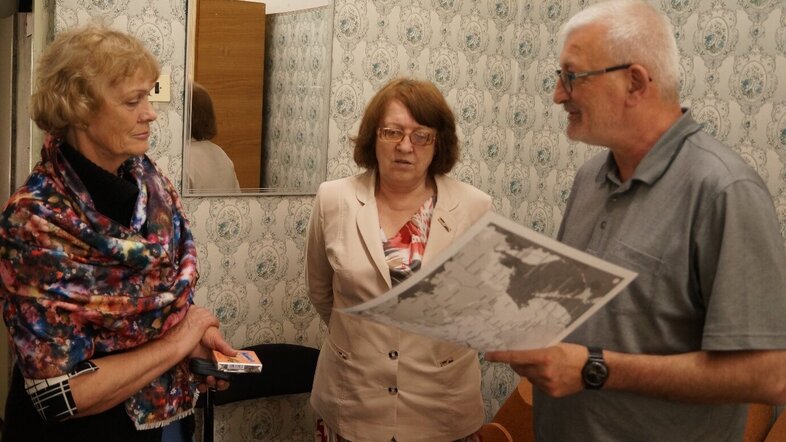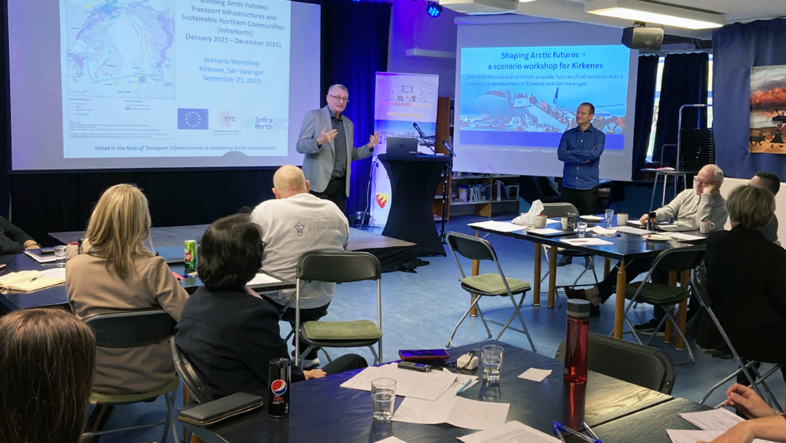Do Arctic roads lead to war or peace?
The Arctic stretches as far as the eye can see. It encompasses regions within the territories of eight countries, including Russia, Norway, Sweden, Finland, Canada and the US. In addition, the Arctic has recently seen an increase in militarisation due to current geopolitical tensions. "In reality, the Arctic is heterogeneous, but following Russia’s full-scale invasion of Ukraine, we’re once again facing a situation reminiscent of the Cold War, one that suggests a divided Arctic", explains anthropologist Peter Schweitzer. Donald Trump's second term adds another layer of conflict to an already complex situation in the Arctic. Schweitzer was supposed to travel to the Russian Arctic for his large-scale research project on the Arctic transport infrastructure — but Russia's war of aggression has made that no longer possible.
We meet him instead in his office at the Department of Social and Cultural Anthropology at the University of Vienna. We are surrounded by towering stacks of books, with titles that evoke images of adventurous polar expeditions. When it comes to the Russian Arctic, Peter Schweitzer and his team are now working from Vienna with older field research data. Their project takes a pan-Arctic approach, and their questions about Arctic transport infrastructures have taken them to the European and North American Arctic. "Unfortunately, the developments of recent years have made it more difficult to reflect the heterogeneity of Arctic ways of life."
Video: Researching Arctic Communities in Transition
Arctic infrastructure – but for whom?
Countries like Austria and Germany are dependent on oil and gas. Since 2022, several EU member states have reduced their imports of Russian fossil fuels. Hence, the non-Russian Arctic regions are under immense pressure to supply EU countries with these sought-after raw materials. This is why transport infrastructure is currently the topic of many heated debates. Yet the voices of local residents, some of whom are Indigenous, are rarely heard when it comes to decisions about new harbors, paved roads, or expanded airstrips.
"Infrastructure in the Arctic is usually not built for the people who live there, but to serve external economic and political interests", asserts Schweitzer. "And yet, every additional road or railway line in such a sparsely populated region has a huge impact on the lives of the local communities. We want to find out how locals are responding to these changes."
Watching Russia from afar
Nome, Alaska: The gold rush of the late 19th century brought about an influx of settlers, but the once-glorious image of gold miners has long since faded. Today, approximately 3,600 inhabitants live in Nome: On the one hand, old-timers who still dream of discovering gold, on the other, Indigenous peoples who preserve the traditions and ways of life of their ancestors. Nome, of all places, is set to become the site of a port project worth over 600 million US dollars. "Nome has very few raw materials and the water is too shallow for a port of this size. Yet the proximity to Russia is what makes this city so attractive allowing US Coast Guard and Navy ships to station near the Russian border. Here, too, the question arises as to what changes the second Trump presidency will bring."
Socio-anthropological research in remote parts of the world
In the research project InfraNorth – Building Arctic Futures: Transport Infrastructure and Sustainable Northern Communities, Peter Schweitzer and his team are investigating whether existing and planned transportation infrastructure has a positive or negative effect on the living conditions of the local population. The project is funded by a prestigious Advanced Grant from the European Research Council (ERC). To the project website
Yet, the geopolitical significance of their hometown is not the main focus of the people who live there. Instead, they are concerned about the huge influx of workers assigned to Nome’s port project, who will soon be flooding the town centre. And they worry about the resulting increase in housing prices. Not only in Nome but in many Arctic communities, Peter Schweitzer and his research team listen to the local population. They spend time with residents, attend city council meetings and sometimes even join concerned locals for a drink.
Peter Schweitzer enjoys engaging in conversations with people and communities. This comes as no surprise: Having conducted research at the University of Alaska Fairbanks for around 20 years and having travelled throughout the Arctic, he has built up an extensive network of personal contacts. His anthropological toolkit is always with him on research trips: formal interviews, focus group discussions, participant observations and scenario workshops.
Possible futures: What if...
The scenario workshops held in Kirkenes, Norway, and Churchill, Canada, were organized by researchers from the University of Vienna in collaboration with the International Institute of Advanced System Analysis (IIASA). These workshops brought together local residents and stakeholders on-site to discuss possible future scenarios for their communities. . What if oil prices skyrocket, decarbonisation accelerates, or the town is declared a nature reserve overnight for climate protection? Schweitzer and his team aimed to spark discussions on the role tof transport infrastructure in shaping the living conditions of these Arctic communities, while also gathering data to ensure the local voices would be heard.
Speaking of climate: The Arctic has not only been in the international spotlight due to the ongoing Russian war of aggression against Ukraine but also due to the advancing climate crisis. In the far north, people are losing (permafrost) ground beneath their feet because of climate change. "But the Arctic locals have learned to adapt to the ever-changing environment, out of pure necessity", emphasizes Schweitzer. In addition to InfraNorth, the dedicated researcher is also involved in other projects addressing the effects of thawing permafrost on Arctic communities. But that is a topic for another time. For now, Peter Schweitzer has to pack his bags once again. It is time to head back to the Arctic. Where else would he go? (hm)
What happens if the permafrost thaws?
"Permafrost matters": Under this motto, researchers in the completed Nunataryuk (land to sea) project worked together to understand how thawing permafrost affects the global climate and lives of people in the Arctic. Together with local communities, Peter Schweitzer and his team developed adaptation strategies for Arctic coastal populations. The current (follow-up) project Illuq focuses on the consequences of permafrost thaw for the health of humans, animals and ecosystems.
He supervises several high-profile research projects, is an editorial board member of many subject-specific journals and recently received an Honorary Lifetime Membership Award from the International Arctic Social Sciences Association (IASSA) for his contribution to research.


